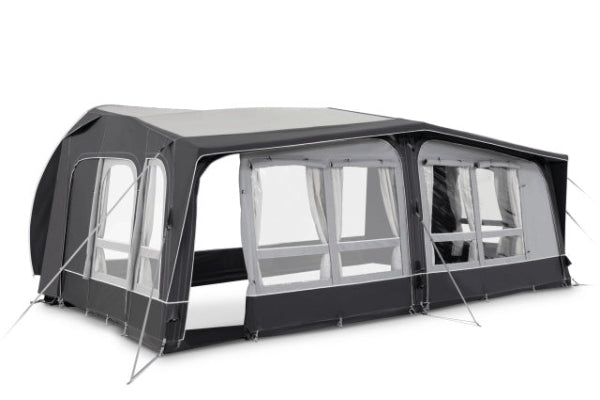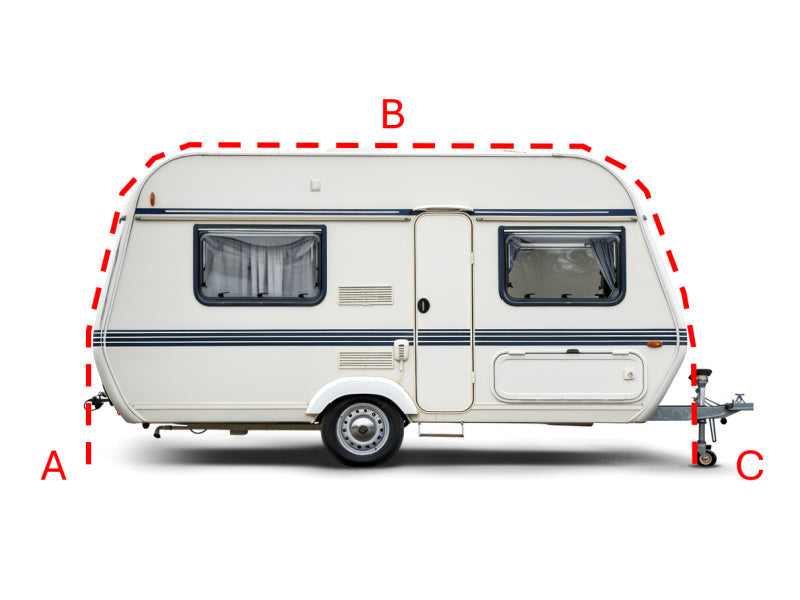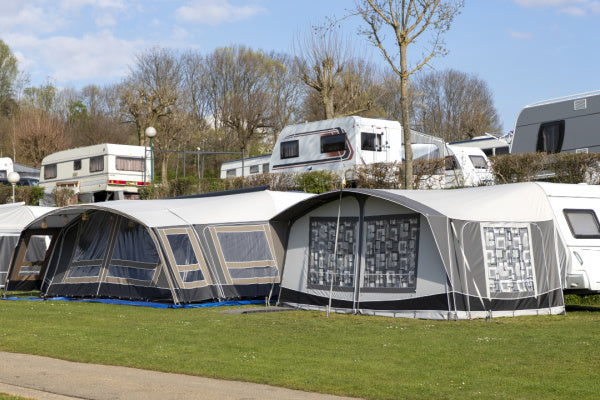Caravan Awning or Gazebo?
Stuck between caravan awnings and gazebos? For most caravanners, an awning is your best mate – it's built specifically for your van, weather-resistant, and creates a cosy extended living space. But wait! Before you dash off to buy one, there are some surprising perks to gazebos that might change your mind...

Caravan Awning vs. Gazebo: A Comparison
Size and Portability
Let's talk space - the eternal camping challenge. Caravan awnings nestle right against your vehicle, making them brilliant space-savers at tight pitches. Think of them as your van's cosy conservatory, adding valuable living space without hogging the entire pitch.
Gazebos offer more wiggle room, standing proud as independent structures. The trade-off? They need separate storage space in transit, which can be tricky if your van is already packed to the rafters.
Picture trying to pack a large family tent versus a compact sleeping bag - that's the difference in portability between these options. While awnings tuck neatly into purpose-built bags, gazebos often need more substantial storage solutions.
Most modern awnings pack down surprisingly small, about the size of a large holdall. Gazebos, even the portable ones, typically need boot space equivalent to a couple of suitcases.
Ease of Setup and Takedown
Setting up shouldn't feel like an episode of a TV challenge show. Caravan awnings require proper alignment with your van's awning rail - a bit like threading a giant needle. With practice, expect about 30 minutes from start to finish.
Gazebos often boast quick-deploy mechanisms. Many pop up faster than you can say "time for tea." However, larger models might need an extra pair of hands for stability during setup.
The real difference shows in the details. Awnings need careful tensioning and pegging to perform their best. Gazebos generally offer more forgiving setup requirements, though they need thorough anchoring in anything more than a gentle breeze.

Durability and Weather Resistance
British weather throws everything at outdoor equipment - sometimes all four seasons in one afternoon. Caravan awnings are built for this meteorological rollercoaster, featuring heavy-duty materials and robust frames.
Their snug fit against the van provides excellent stability in high winds. The integrated design means fewer weak points where rain might sneak in.
Gazebos put up a decent fight against the elements but often need additional weatherproofing measures. Their freestanding nature makes them more susceptible to gusts, though modern designs include clever features to enhance stability.
Think of awnings as permanent extensions and gazebos as fair-weather friends. Both serve their purpose brilliantly, but awnings generally edge ahead in the durability stakes.
Versatility and Features
Modern awnings come packed with clever features. Integrated windows flood the space with natural light, while removable panels offer flexibility in different weather conditions.
Gazebos shine in their adaptability. They can create social spaces anywhere on your pitch, not just beside the van. Many include mosquito nets, removable sides, and adjustable openings.
Both options offer fantastic shade from summer sun and shelter from rain. Awnings typically provide more insulation, making them cosier in cooler weather.
The ability to add or remove sides, adjust ventilation, and create different zones makes both options incredibly versatile for various camping scenarios.

Cost and Value
Let's talk pounds and pence. Quality gazebos typically start around £200, reaching upwards of £1,000 for premium models. Caravan awnings usually fall between £150-£800, depending on size and features.
The initial price tag tells only part of the story. Consider these ongoing aspects:
- Replacement parts availability and cost
- Storage solutions when not in use
- Seasonal maintenance requirements
- Expected lifespan under regular use
Awnings often prove more cost-effective long-term, thanks to their durable construction and specific design for caravan life. However, a well-maintained gazebo can provide excellent value, especially if used for multiple purposes beyond camping.
Choosing Between an Awning and a Gazebo
Consider Your Camping Style
Camping habits should drive this decision. Weekend warriors might appreciate a gazebo's quick setup and versatility. Regular tourers often find awnings more practical for extended stays.
Think about typical trip duration, preferred camping seasons, and how the space will be used. Rainy-season campers might lean towards awnings, while summer holiday makers could find gazebos perfectly adequate.
Assess Your Budget
Smart budgeting looks beyond the price tag. Factor in:
- Essential accessories and fitting equipment
- Storage solutions between trips
- Potential repair costs
- Insurance implications
- Seasonal maintenance needs
Remember that investing in quality usually pays dividends in longevity and performance, regardless of which option you choose.
Prioritise Key Features
Create a must-have list based on:
- Local weather patterns where you usually camp
- Available storage space at home
- Setup time preferences
- Space requirements when pitched
- Seasonal usage patterns
Consider which features matter most for your camping style. Some might prioritise quick setup, while others focus on weather resistance or space optimisation.
The perfect choice balances practical needs with personal preferences. Both awnings and gazebos can transform your caravan experience - it's about finding the right match for your specific requirements.
This detailed comparison should help narrow down the options and guide towards a choice that enhances future camping adventures. Whether prioritising weather protection, setup speed, or versatility, both options offer unique benefits worth considering.
Other content you might like:
- Where can I sell my caravan awning?
- Caravan awning brands
- Caravan awning guide
- Quickest caravan awning to put up
- What is the easiest caravan awning to put up?
- Are electric caravan awnings any good?
- Are caravan awnings a good investment?
- Types of caravan awnings
- Caravan awning vs tent
- Caravan awning flooring ideas
- Caravan awning furniture ideas
- Caravan awning storage ideas





Leave a comment